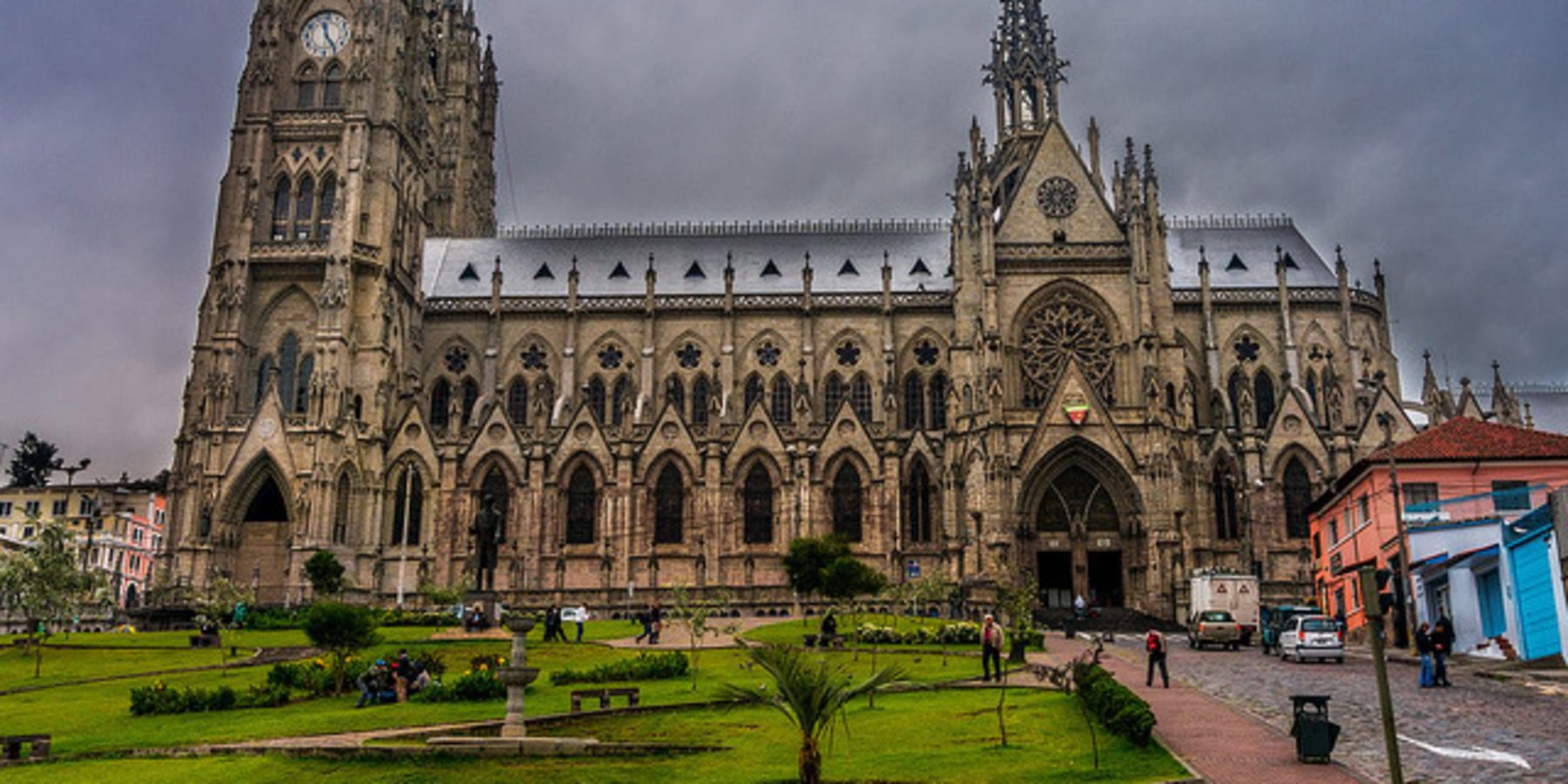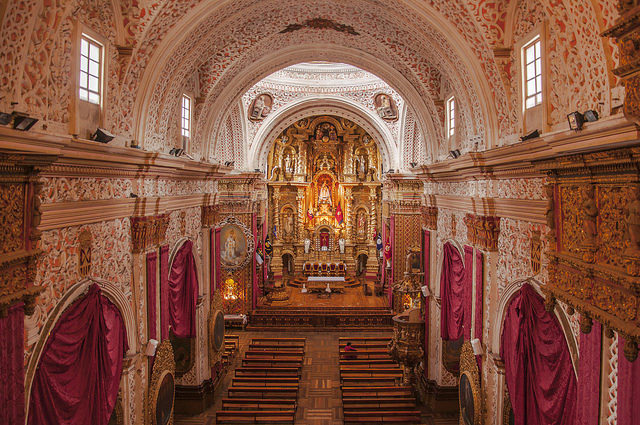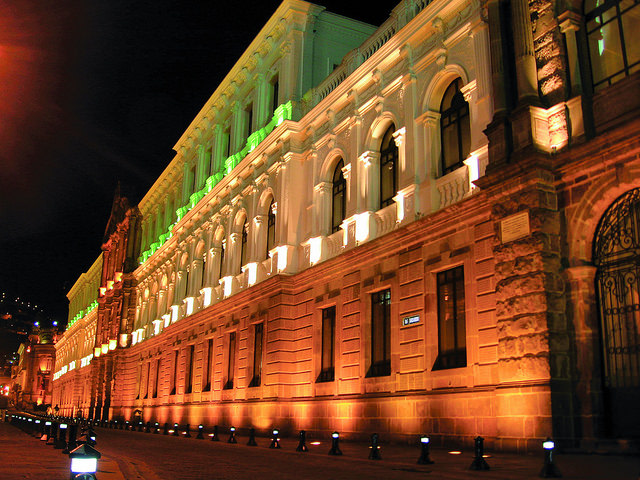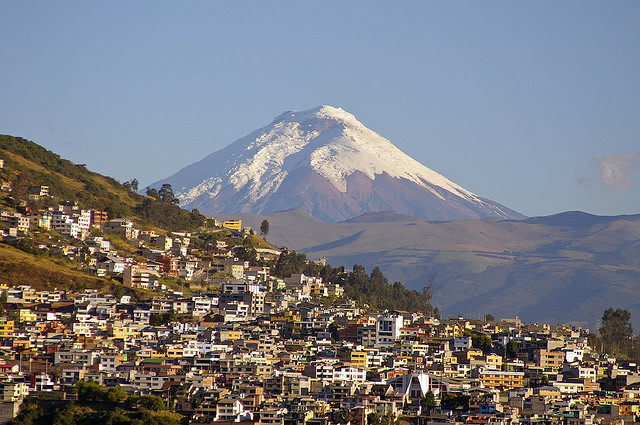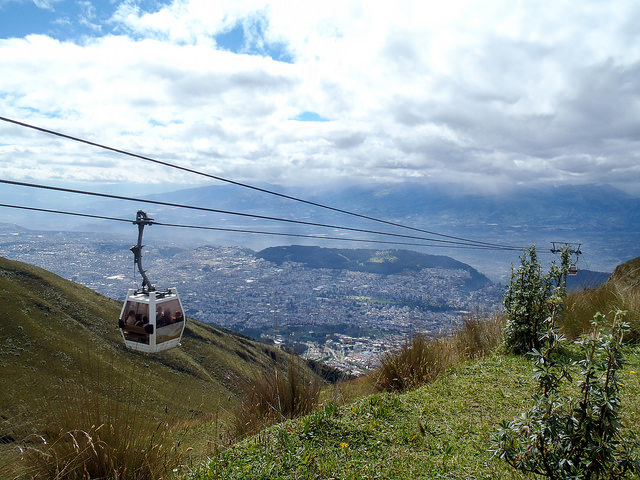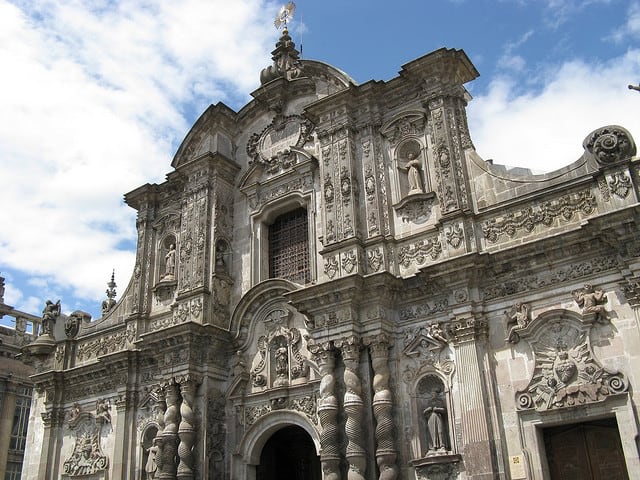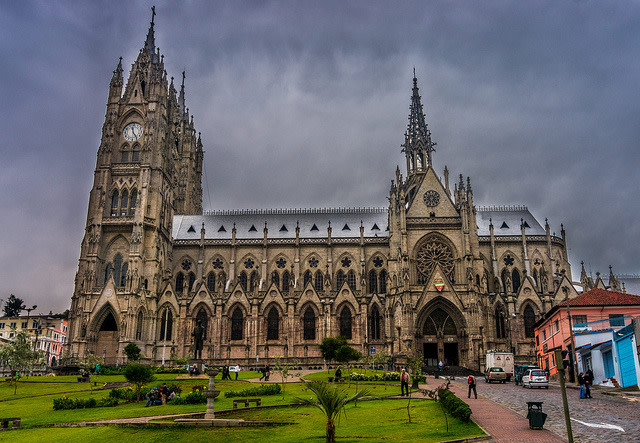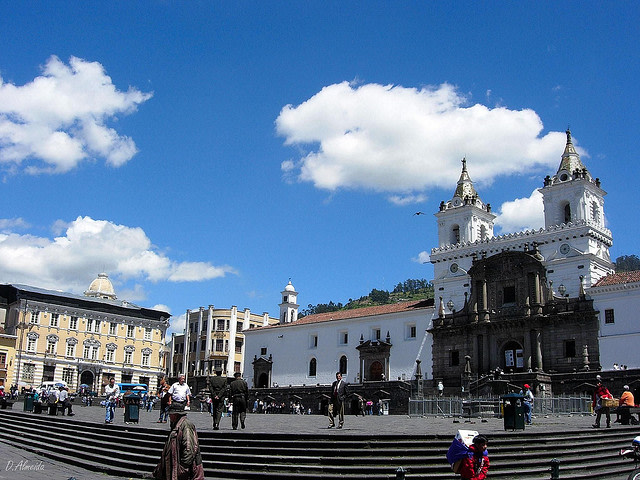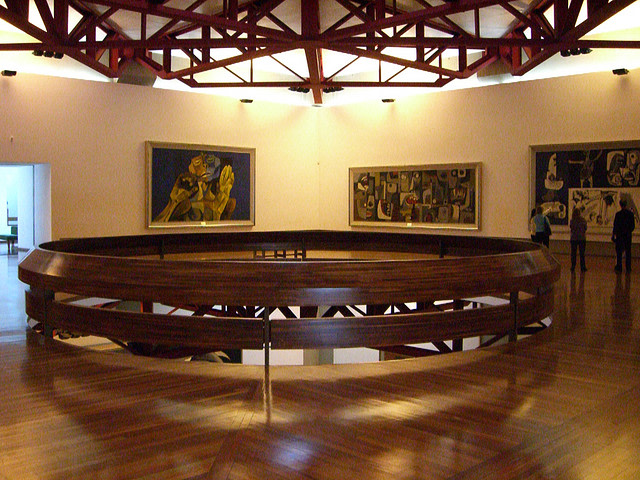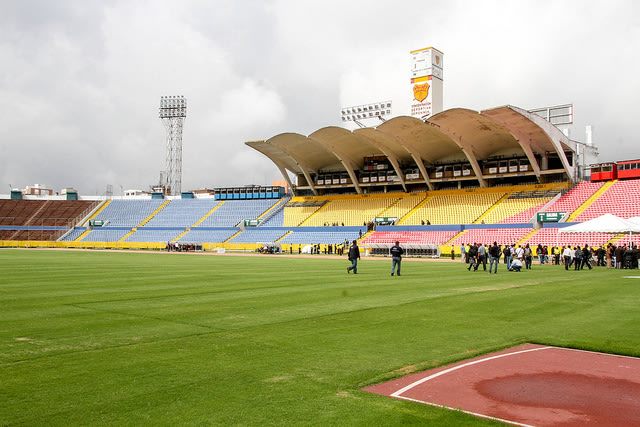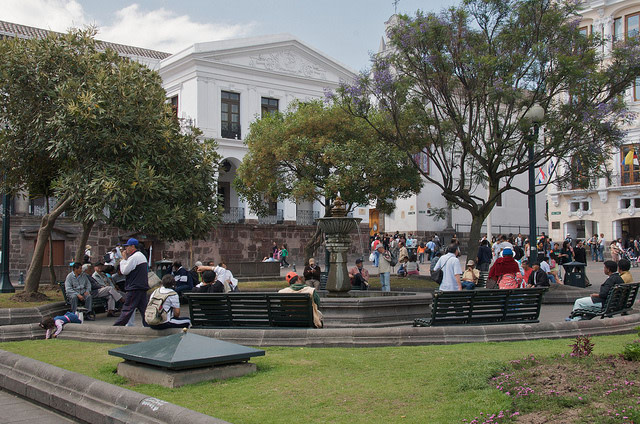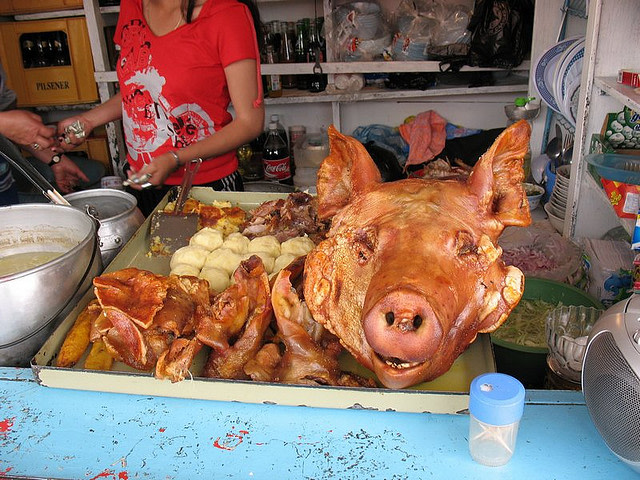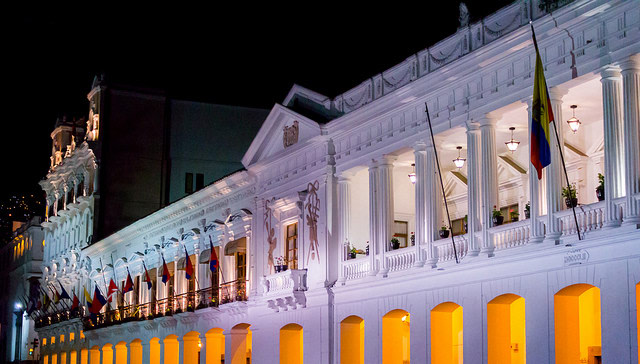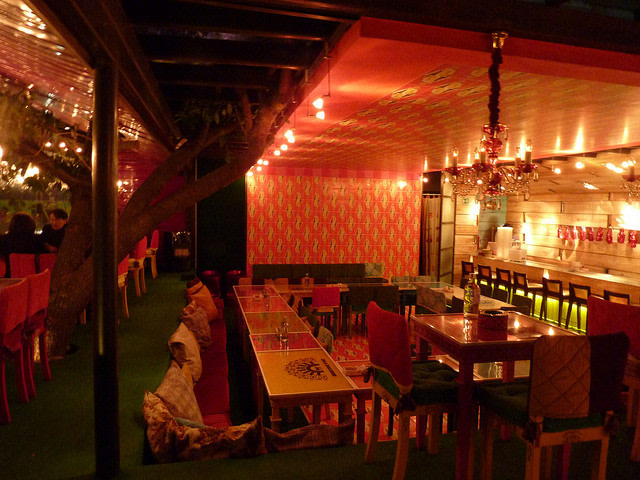| 10 mins read
Welcome to Quito!
One of the highest capital cities of the world (at an elevation of 9,350 feet), Quito sits perched along the eastern slope of the Pichincha Volcano in the Andes Mountains of north central Ecuador. One of the first cities inscribed into UNESCO in 1978, along with Krakow in Poland, this World Heritage Site is one of the most well-preserved ancient cities in the world. Quito particularly stands out for its architectural designs in the Baroque School of Quito, which fused European Baroque architecture with indigenous imagery and history in the 1600s. Here is a Quito Tour Guide to help travelers navigate this historic masterpiece.
Brief History of the Region
Quito, also known as Villa de San Francisco de Quito, was founded in the 16th century on the ruins of an Incan city. Despite the destructive force of multiple earthquakes in the area, it remains the least altered historic center in all of Latin America. Its name is derived from the Quitus people, who inhabited the region as early as 2000 B.C. A capital territory of the Seyris and the Incas as well, Quito was then occupied and declared a formal municipality of Spain in 1534 by Sebastián de Belalcázar, a lieutenant of the Spanish conquistador Francisco Pizarro.
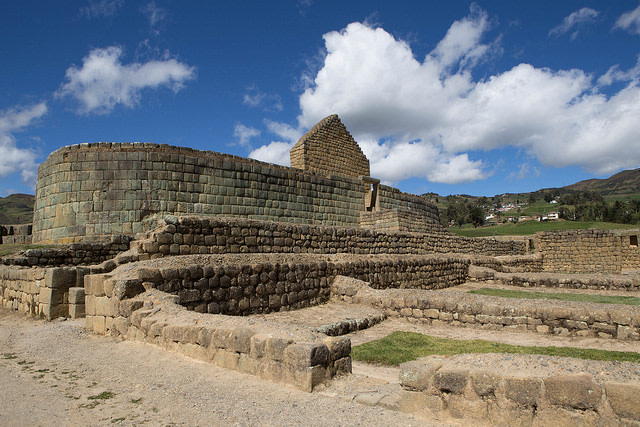
Ecuador is an ethnically diverse nation, with the largest population (almost 72 percent) made up of Mestizos, the descendants of Spanish colonists and South American Indians, followed by Amerindians and Afro-Ecuadorians (about 7 percent) and people of European descent (12 percent). The official language of Ecuador is Spanish, although there are some indigenous dialects such as Quichua, but most of Quito’s two million residents speak Spanish and English since it is a major area of tourism.
Life on an Active Volcano
Life in Quito means working and playing in a geographic basin surrounded by volcanoes, specifically the Pichincha Volcano and its many summits, among them Ruku, Guagua and Wawa Pichinchas. The Instituto Geofisico (IG) monitors volcano activity in the Quito area. Most recently (November 2014), IG is observing Reventador, a volcano reaching 11,400 feet (3,475-m.) and located 60 miles west of Quito. Cotopaxi, one of the world’s highest active volcanoes at over 19,000 feet, is also visible from Quito and a part of the famous Ring of Fire.
The Quito Teleferiqo Gondola may not look like much from the parking area, but it gets rave reviews as the best view of Quito and the surrounding snow-capped volcanoes. The 15-minute gondola ride runs daily and reaches an altitude of almost 14,000 feet. Bring warm clothing, comfortable hiking shoes, cameras, binoculars, sun block, and a bottle of water. Hike the surrounding trails or stay for a light lunch or snack in the café. Bring a mountain bike up the gondola for a challenging ride. Allow time to make the round-trip journey – sometimes the return trip can take longer due to lines. Try to pick a clear day to fully appreciate the picturesque views, but remember rain is possible in the afternoon even during the summer months.
A Few of Many Interesting Places to Visit in Quito
The Iglesia de La Compania de Jesus is one of the most-visited churches in Quito. This Jesuit church, inspired by Roman Jesuit influences, was constructed over 160 years in the 17th and 18th centuries. It represents several styles of architecture, but is seen as a grand example of Spanish Baroque architecture in Latin America with its ornately decorated nave of gilded plaster and wood carvings. A sarcophagus with the remains of Ecuador patron saint, Mariana de Jesús de Paredes, is located in the central altar. La Compania, as it is known locally, was repaired several times over the centuries as the result of several earthquakes.
Basílica del Voto Nacional is an impressive Roman Catholic church in the heart of the Historic Center. The Basilica is considered the most important work of neo-Gothic Ecuadorian architecture. Be sure to take the elevator or steps to the top of the tower for fantastic views of Quito. Although the basilica’s construction began in 1887, its inauguration and consecration did not occur until 1988, and according to local folklore its construction continues, because upon its completion will come the end of the world and destruction of Quito.
The Iglesia de San Francisco is set on the Plaza de San Francisco where visitors can rest and enjoy a local cafe. Built upon the ancient Incan palace ruins, this colorful Catholic Church and convent was initiated by Franciscan missionaries. It houses Quito’s beloved Virgin of Quito, created by artist Bernardo de Legarda in the 16th century. It is steps from the Plaza Grande, or Plaza de la Independencia, and the Carondelet Palace. The palace is the active seat of Ecuadorian President Rafael Correa. In 2007, he announced the palace to be of cultural heritage and opened it as a museum to all visitors. Public tours of the palace are free, but require photo I.D. to enter.
La Capilla del Hombre is part of the Guayasamin Museum. Built high in the Bellavista area of Quito, it is the home and museum of Oswaldo Guayasamin, a 20th century Ecuadorian master painter and sculptor of Quechua and Mestizo heritage. This site is recommended for its representation of Ecuadorian art, struggle and beauty.
For sports fans, particularly those of Latin American “futbol,” the Estadio Olímpico Atahualpa is located in an affluent neighborhood in the northern area of Quito. The stadium is home to both Deportivo Quito and El Nacional matches and tickets can usually be purchased on game day at the stadium, which is easily reached by public bus.
Quito officials have dedicated green space to several parks throughout the city. Inaugurated in April 2013 on the grounds of Quito's former airport, Bicentennial Park is one of the most ambitious green spaces in the city and the perfect setting for outdoor activities and festivals, as well as quiet walks. It is located a few miles north of city center.
Local Cuisine and Night Life
Today’s Quito cuisine is a mix of pre-Hispanic, colonial, republican and contemporary cuisines. Traditional meals often include three courses – soup, rice and meat or fish, and then a final course of dessert and coffee or herbal tea. A dietary staple of the region is the yuca, also known as cassava, a starchy root which is boiled or fried and used in a variety of other dishes. The versatile yuca is also ground as flour for bread, which is very popular as a snack. In Quito shops, it is often sold as pan de yuca (small balls of doughy bread and cheese) with fruity yogurt drinks. Many fruits are available in this region, including tree tomatoes, also known as tamarillos, bananas, tree grapes and peach palms. When touring, visitors might try some of the many fresh fruit juices and popular “street” food known as hornado, consisting of potatoes and roasted pig. For the culinary adventurer, cuy or guinea pig, is a local favorite served either whole (head included) or half (less visually shocking for those easing into guinea pig).
Quito’s Centro Historico or Colonial Center is a great place to try empanadas, humitas (corn cakes in the husk), helados de paila (handmade fruit sorbets) and canelazo, a hot drink made with local aguardiente (cane sugar alcohol), cinnamon and naranjilla fruit. Look for a cobblestone street called La Ronda in the Historic Center and enjoy less expensive restaurants with local foods and shops. It is well-lit and safe. The Santa Clara Market offers vibrant produce, herbs, meats and light meals.
For nightlife, there are abundant nightclubs offering modern dance music, bands, local beer, and alcoholic beverages. The La Floresta neighborhood offers a more modern twist on Quito restaurants and bars, with Mediterranean and Spanish influences. In La Mariscal neighborhood, travelers find a popular tourist area a broad selection of international restaurants and clubs, all within a concentrated area. The Mariscal is also home to some of the best artisan markets in the city, some only open on Saturdays.
Some DO’s in Quito
DO bring plenty of sun block, since the sun is quite intense at high elevations.
DO exchange money at the airport for prior to travel. Quito’s currency is the United States Dollar.
DO keep in mind Quito is a large city, so use common sense and stay alert when walking around the city.
DO carry a passport photocopy (including the personal data page and the entry stamp and/or visa) rather than an actual passport. Passport theft in Ecuador is prevalent. Keep the original locked away or purchase an under-clothing passport carrier available at most travel bag shops.
A Few DON’TS in Quito
DON’T overdo it. Hydrate before traveling to and around Quito, because the high elevation can cause altitude sickness. Take it easy and drink plenty of water.
Getting to Quito and Around Town
The main airport serving Quito, Mariscal Sucre International Airport, was relocated in 2013 and is now about an hour east of Quito. With is new design and capacity, it is one of the busiest airports for passenger travel and freight in South America. Quito transportation options are modern despite the city’s historic appeal. A new underground metro consisting of a single line and 15 stations is scheduled for 2016. The MetroQ bus is inexpensive and gets travelers from one end of the narrow city to the other. Yellow taxis are also cheap and readily available. Traffic and steep hills can pose difficulties for getting around Quito, but scooter rentals give travelers another way to explore. The Historic Center of Quito is best explored on foot or bicycle.
Weather in Quito
Although close to the equator, Quito maintains mild temperatures due to its high altitude. The summer months, June through September, are usually dry and warm with highs in the mid to upper 70s F and lows in the 50s F; however, be ready for afternoon rains, even in the summer. Quito’s winter spans several months, October through May. Winter temperatures are nearly the same as summer, but the chance for rain is much greater given Quito’s annual precipitation average of 40 inches per year.
Image Details and Licenses:https://flic.kr/p/oz6PBg(Quito Turismo,CC BY-NC-ND 2.0),https://flic.kr/p/pixtkd(W Mink,CC BY-NC-SA 2.0),https://flic.kr/p/oRyG2w(Quito Turismo,CC BY-NC-ND 2.0),https://flic.kr/p/qGZaD8(Agencia de Noticias ANDES,CC BY-SA 2.0),https://flic.kr/p/2LkRpT(Malcolm Surgenor,CC BY-NC-ND 2.0),https://flic.kr/p/ovoPAy(Sheep"R"Us,CC BY-NC-ND 2.0),https://flic.kr/p/7pqCYA(Bill Herndon,CC BY-NC-ND 2.0),https://flic.kr/p/f7DtAC(BORIS G,CC BY-NC-SA 2.0),https://flic.kr/p/5xNXUp(David Almeida,CC BY-NC-ND 2.0),https://flic.kr/p/7GrKn(Jason Pearce,CC BY-NC-SA 2.0),https://flic.kr/p/jqcqPc (Agencia de Noticias ANDES, CC BY-NC-SA 2.0), https://flic.kr/p/7uHwxY(A.Davey,CC BY 2.0),https://flic.kr/p/554bbG(Vilseskogen,CC BY-NC 2.0),https://flic.kr/p/fThEHg(ferandradeg,CC BY-NC 2.0),https://flic.kr/p/9za6ZD(Carmony123, CC BY-NC 2.0)

